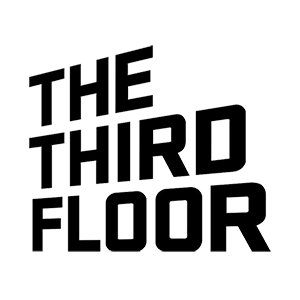
Los Angeles-based visualization studio THE THIRD FLOOR (TTF) has had great success preventing such losses for their clients. When TTF delivers pre-visualization to franchises like The Avengers or Star Wars, they mobilize technicians, editors, and artists to create blockbuster scenes with an advanced form of Computer Generated Imagery with digitized versions of actors, sets, cameras, and props. These scenes are indistinguishable from those taken on-set. TTF creates millions of dollars of value in film not wasted, people and equipment not mobilized to shoot, and headaches not suffered by the logistics team.
In August, for a new film, TTF might need fifteen artists who will work offsite in a client’s location and network. Come September, that number may increase to forty-eight, balloon to eighty-four in November, and be back at fifteen after New Year’s. And each person must be provisioned with hardware, apps, data, and then be joined to the client’s ultra-secure network.
Having TTF’s IT team travel to meet every user demand, is out of the question. To get around this, TTF had used VDI on-premises, setting up server hardware remotely for editors to access wherever they worked. This made TTF’s work possible – but it still didn’t alleviate the scalability problem.
To use TTF Director of Technology Jeremy Oddo’s own words:

We can’t just sprinkle around half a million dollars’ worth of infrastructure all over town. We may have ten shows, 15 shows that are off-site. We may get a call on Thursday to start a show on Monday. We need to get multiple servers and ten or twenty machines with all the software going. It’s complex, and because of that, we can’t get too sophisticated with an overly complicated setup. Building out our traditional VDI solution—and making it deployable at our clients’ locations—was simply consuming too much of our time.
With these highly secure shows, we would take a VDI server with us to allow artists to get to the Internet. Often, the team sizes grow, which leaves us tasked with building out additional VDI servers, running them to the client’s location, and spending time onsite with final configuration. It could take multiple days to complete. More often than we’d like, a VM would go south on us, causing downtime for the artist. It’s always this constant dance of trying to keep the VMs up and running. That’s completely avoided by running itopia’s cloud solution.Jeremy Oddo
“Is this hardware necessary?”
This question defines the motive for cloud computing and propels itopia into action.
TTF came to us after a demonstration of cloud desktops at Google offices in LA. They already wanted to go cloud and understood on-premises VDI was their stack’s liability. But they needed a product that could offload the manual work and cut out the clunkiness as their remote workforce was scaled up and down. Here’s where itopia software made the difference:
The final step involves artists bringing their high-class film devices to work with clients (including ultra-sensitive client IP) while accessing their company work session and business services like Microsoft Office, email, and Google Earth (for visualizing locations) via Google Cloud. This way, TTF artists continue to do pre-visualization as they’ve always done but are pleased to find all business ops are now simple, fast, and extremely available.
It’s an inversion of the traditional hybrid data security model, where sensitive data is boxed-up in the cloud and business ops happen inside local devices. Countless companies want to guarantee maximum security without handcuffing their mobile workers. For TTF and others, making client IP local while granting access to hyper-accessible cloud work sessions is a new way forward.
Here’s how Jeremy describes the benefits:
“The solution makes so much sense to us. It allows us to create a bigger divide between our Internet activity and our secure show content. Our artists can still use the Internet for research while our production content, that absolutely needs to be secure, has no direct path out to the Internet—that gives us confidence we’re protecting our clients’ IP, and by extension, protecting us as well. Being able to lift that workload up to the cloud, separate it from our production content, and expand at a moment’s notice makes this a winning solution.”
Today, Jeremy and the rest of TTF team can enjoy dramatic spikes in workloads without the professional anxiety of securing users and standing up server hardware on tight timelines.
itopia’s software provides scalability and security at an affordable cost, while Google Cloud provides the network that makes anything possible.